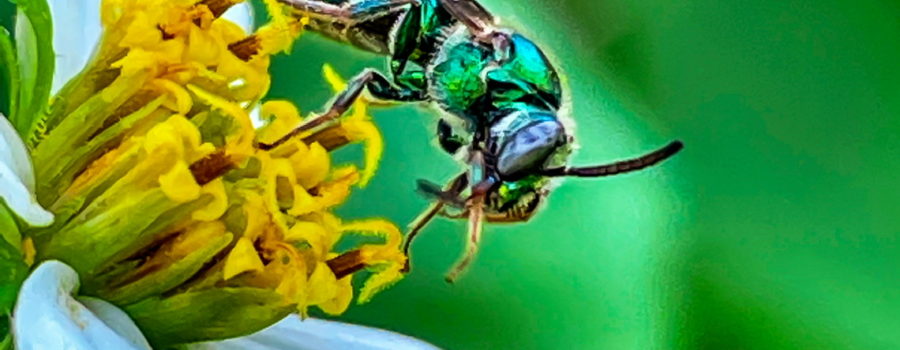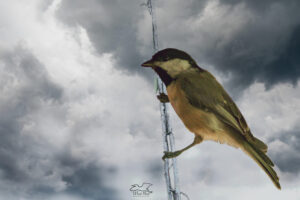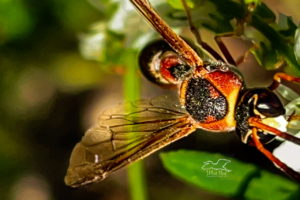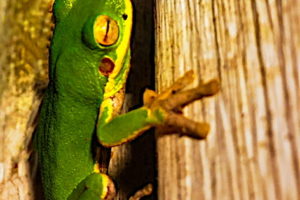The Brown-Winged Striped Sweat Bee is a Beautiful Pollinator

Tropical storm Elsa, who graced us here in central Florida with her presence just after the Fourth of July, dumped quite a bit of rain on our area. Since all that rain, the wildflowers, which had gotten off to a slow start thanks to a very dry spring, have started blooming like crazy! It’s kind of late in the year for phlox, but there are several other species that have taken their place along our roadsides and woods edges. And along with all these flowers come all sorts of pollinators, including the brown-winged striped sweat bees.

The brown-winged striped sweat bee is the most common sweat bee in the eastern United States. It’s closely related to the pure green sweat bee that I discussed at the end of last year. One thing you will immediately notice about both of these bees is their gorgeous metallic green color. That metallic color (which can also be blue or purple in some species) is a common characteristic in the sweat bee family. The brown-winged striped sweat bee is a bit larger than the pure green sweat bee and is sexually dimorphic, whereas the pure green sweat bee is not. Like the pure green sweat bee and most of the others bees in this family, the brown-winged striped sweat bee is attracted to human sweat. They lick the sweat from your arms and hands to get the salt that sweat contains. If left alone and not swatted at or squashed, the sweat bees are very nonaggressive and will not sting you.

As I stated earlier, the brown-winged striped sweat bee is sexually dimorphic. Both males and females have green heads and a green thorax. In females, the abdominal segment is also a metallic green with dark stripes while in the male it is yellow with black stripes. There also tend to be some behavioral differences between the two sexes. Females tend to fly very quickly and often move rapidly from flower to flower while feeding. Males, on the other hand, are slower in flight, and tend to hang around individual flowers or clusters of flowers searching for or waiting for females. I definitely noticed the difference when I was trying to photograph them. I tried several times to photograph them while I was out in my yard and had a very difficult times getting one in my sights and focused before it was off again. I got side tracked from the bees for a bit by a zebra longwing butterfly (I’m not seeing many of them this year since the passion fruit vines didn’t flower this spring due to the drought). When I got back to the bees I was having a much easier time, and I even wondered why I’d been having such a hard time earlier. It wasn’t until I was researching them that I realized why!

One of the greatest things about these bees, besides their beautiful colors, is the fact that they are not particular in what flowers they will visit to get nectar. That makes them excellent pollinators for a wide variety of ornamental garden plants, vegetables, and wildflowers. The only disadvantage to them in the garden is that they build their nests in the ground and stepping on the nest is a good way to get stung! Luckily, most of the time the nests are built in isolated areas (probably to make it less likely to be stepped on!), but if it is in an inconvenient place, they can often be lured into a new area by making water or a favorite flower (or both) available where you want them to go. So if you live in the eastern US and are lucky enough to have brown-winged striped sweat bees in your garden try to let them alone, and remember not to swat them if they land on you. You will be rewarded with plenty of pollen being spread around amongst your plants!





Recent Comments